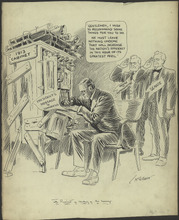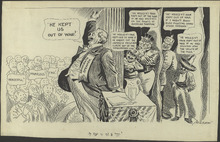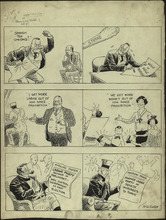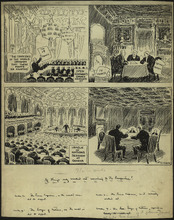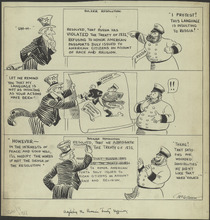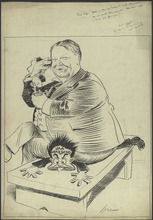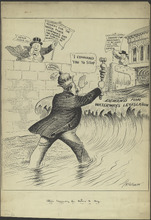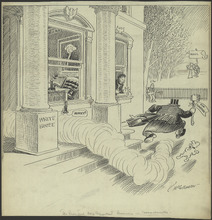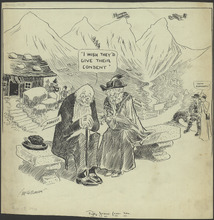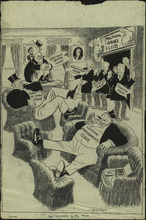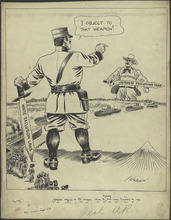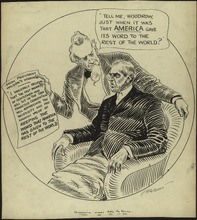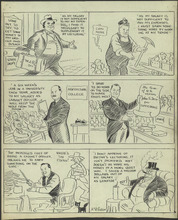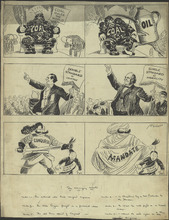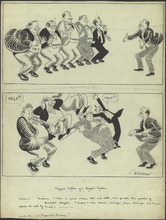This cartoon depicts three different scenes in separate panels. In the top panel, a business man is angry about workers' unions and wants them to be "smashed," but later, with the threat of a strike hovering over him, he signs his name on a wage increase form. Negotiation between workers and employers were becoming a more common occurrence in the 1910s. Unions and the notion of collective bargaining were beginning to be protected under the law. In the middle panel, a man's boss is happy to get more labor out of the man since prohibition. The man's family also claims to get more money out of him since prohibition, and the children show off their new shoes. This panel shows the desired result of prohibition, which was to eliminate the loss of prosperity and productivity associated with drunkenness.In the bottom panel, John Bull smiles while reading the English paper, which proclaims the growing labor party might control government at next election. Meanwhile, Uncle Sam reads an American paper, which proclaims the Farmer Labor Party has grown to contain three people. As Uncle Sam reads the paper, there is panic in the background. The Farmer Labor Party was a political party founded in 1920 from the larger, international workers' movement associated with communism. As Uncle Sam reads the paper, there is obvious panic in the background. This last panel shows the significant difference in culture between the United States and England. England, like many other European states, was learning to tolerate the labor parties, and it eventually adopted the new parties into their political landscape. The United States was hypersensitive to any hint of communism, due to fears of a workers' revolution. Unlike England, the United States constantly sought to limit the influence and growth of these labor parties as much as possible. This fear is seen by the Red Scare the United States experienced in the 1920s. The Red Scare spread mass fear of communism, and it sought to eliminate communism completely from American economics and culture. (Summary created by Mary Delano, MU History Intern, Spring 2018)
